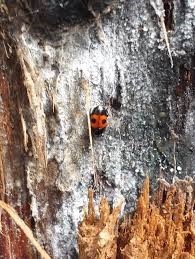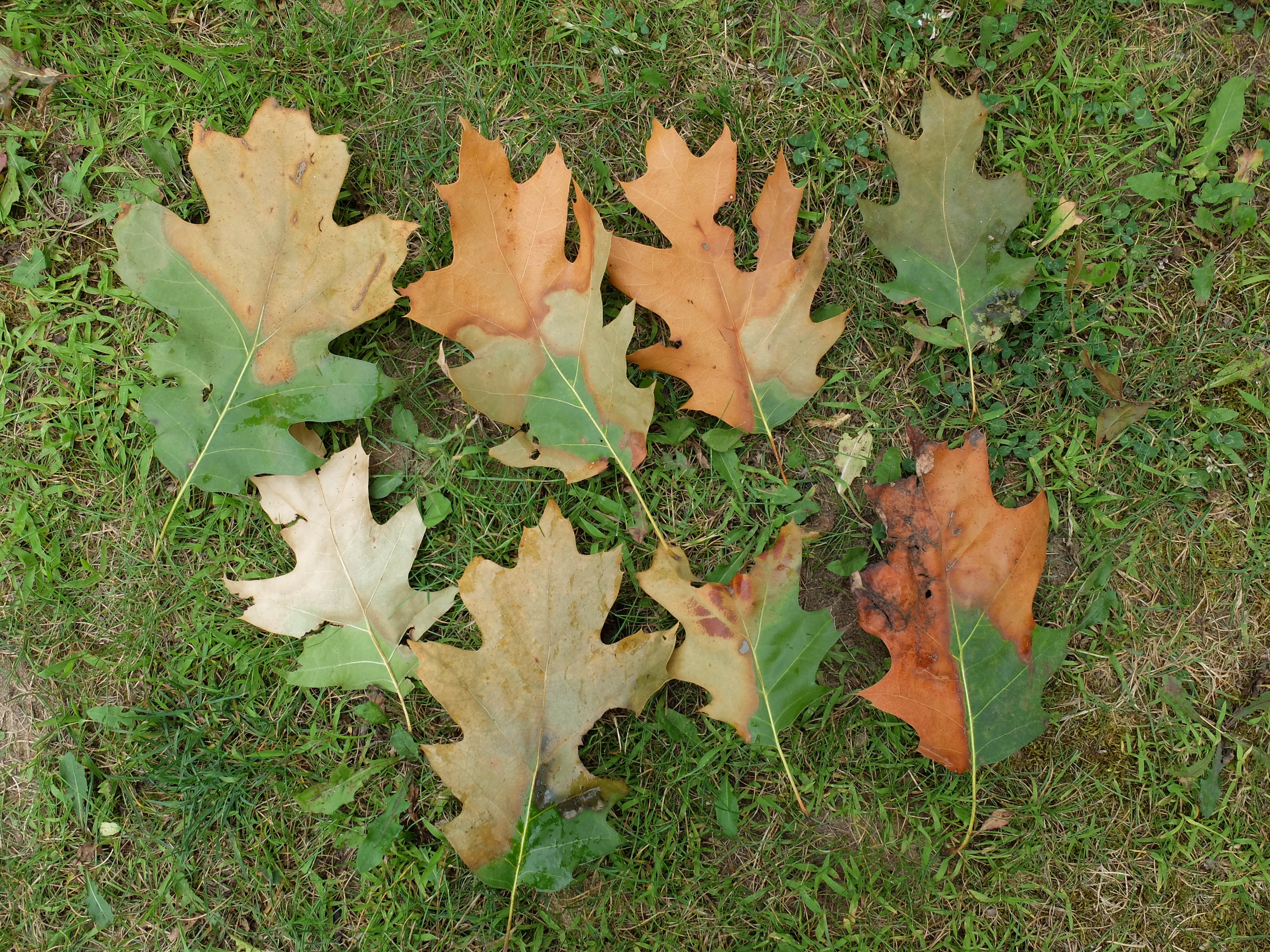Oak wilt prevention starts now
Pruning oak trees during the wintertime helps avoid oak wilt infections during the growing season.

Oak wilt has become a serious disease across Michigan. Avoiding oak tree pruning at the high-risk period of the growing season is an important way to prevent oak wilt. If you need to prune your oaks, schedule tree work for winter months when oak wilt risk is lowest. Even during the winter, professional arborists are booking their work many weeks out. Schedule your tree work now to ensure it is completed before the high-risk period of spring.
One way oak wilt is spread is by small sap beetles attracted by the sap on tree wounds and pruning cuts. During the growing season, primarily spring and early summer, these beetles feed on fresh mycelial mats, or the ‘fruiting bodies’ of the oak wilt fungus (Bretziella fagacearum) where they pick up spores on their bodies. The spores enter healthy oaks when a contaminated beetle feeds on a fresh oak tree wound. In the winter, beetles are less active, and mycelial mats with viable spores are not common, so risk of infection is low. Pruning between April 15 and July 15 should be strictly avoided, and wounds to oaks should be sealed with pruning sealer to prevent infection. Spring is when beetle activity and viable spores are highest, so risk of infection is at its peak.

Oak wilt can also be spread when wood from oaks killed by oak wilt is moved into new areas. It is best to avoid moving firewood to new locations. The mycelial mats can still attract sap beetles on the firewood, risking spread of the fungus to new areas. To reduce this risk, dry and completely de-bark firewood, as it does not contain enough moisture for the oak wilt fungus. Seal freshly cut oak wood by covering completely with an intact tarp and burying the edges in the ground to ensure no access by sap beetles. The tarp should remain in place for at least a year, until wood is dry and debarked.
Another mode of oak wilt disease transmission is from tree-to-tree via shared tree roots. Once an oak tree is infected, it can pass the oak wilt to healthy oaks nearby. The most common and effective way to halt this kind of disease spread is to sever the root connections between infected and healthy oak trees. This is done by creating a deep trench with a vibratory plow, followed by removal of the infected trees. Sometimes a buffer of healthy oak trees will need to be removed as well. Protecting healthy oaks in the infected root-zone area can be achieved with fungicide injections of propiconazole to the root flares. Note that this will have to be repeated in 2 years and may not fully protect trees from above ground spread by beetles. Other methods of halting tree-to-tree infection are being explored and are used when trenching is not possible. It is important to have a professional arborist trained in oak wilt management draw up a management plan before any tree removal is done.
Be aware of what oak wilt looks like to help control disease spread. Oak trees in the red oak group will show leaf wilt symptoms often starting at the top of the tree, followed by rapid leaf loss. Symptomatic leaves can range in color from tan to green and trees die within weeks. A dead oak surrounded by oaks with these leaf symptoms may indicate that the disease has been spreading for 1 or more years.

Because several other pests and diseases can cause problems in oaks, it is critical to confirm that the symptoms are being caused by oak wilt, and not something else. Confirmation of oak wilt disease requires a positive lab test unless a mycelial mat is located under the bark of a dead oak tree.
For information on how to collect a sample to test for oak wilt, read The Best Sampling Procedures for Accurate Oak Wilt Testing. If oak wilt is confirmed, consult a qualified arborist with oak wilt management training. The Michigan Oak Wilt Coalition maintains a directory of professionals experienced in the diagnosis and treatment of oak wilt disease and is available on their website.
Know the signs of oak wilt and the steps to prevent it. These steps include avoiding pruning activity on oaks during high-risk periods, managing disease outbreaks effectively, and not moving firewood to new areas. These actions will help protect oak trees and the countless benefits they provide to people, wildlife, and our communities. For more information on this disease, view the following article from Michigan State University (MSU) Extension.



 Print
Print Email
Email

